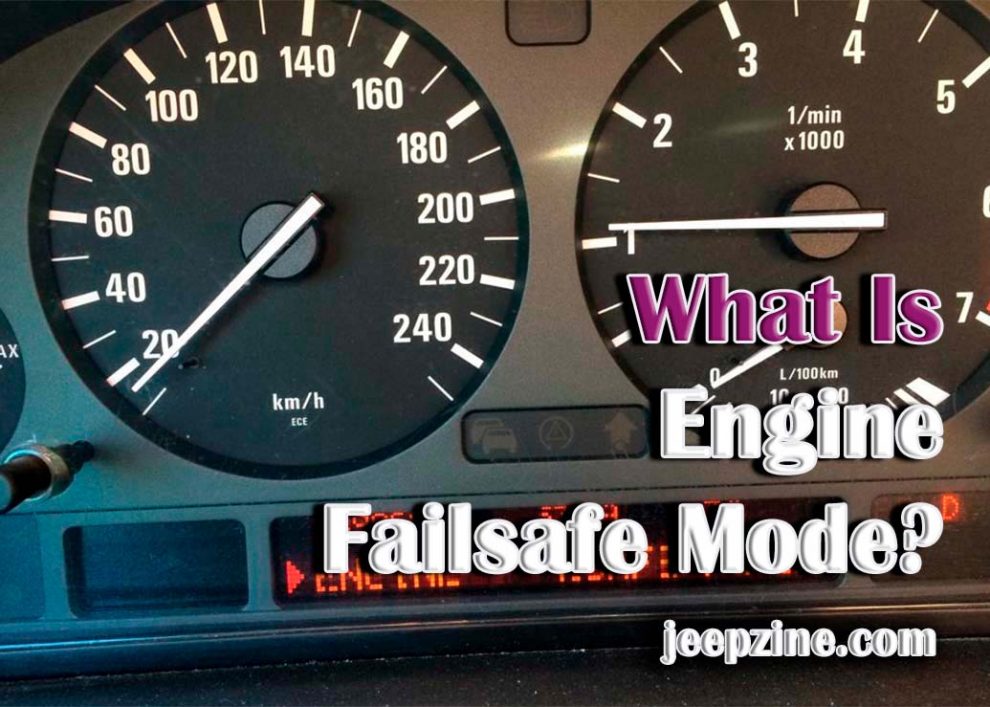Have you ever noticed a warning light or heard an audible alarm from your vehicle and wondered what it means? Chances are that the car is in engine failsafe mode. In this article, we will discuss what engine failsafe mode is, how it works, its importance, and how to diagnose potential issues with your vehicle. Understanding engine failsafe mode will empower you to take appropriate action and ensure the longevity and reliability of your vehicle’s engine.
What Is Engine Failsafe Mode?
Engine failsafe mode, a protective mechanism in modern vehicles, initiates when potential engine issues are detected. This mode safeguards the engine by limiting its power, preventing extensive damage. The vehicle’s system vigilantly monitors key engine parameters, including temperature, fuel pressure, and oil pressure. When anomalies are noted, engine failsafe mode activates, usually triggering a warning light on your dashboard. This activation typically results in noticeable changes, such as reduced acceleration or power output. While it may slightly hamper vehicle performance, it serves as a vital alert that your vehicle requires immediate professional attention to prevent severe and potentially costly damage.
How Does Engine Failsafe Mode Work?
Engine failsafe mode operates through a complex network of sensors, actuators, and the engine control unit (ECU) to monitor various parameters and respond to potential issues. The ECU continuously gathers data from sensors throughout the vehicle, such as the engine temperature, oil pressure, throttle position, and exhaust gas readings. When abnormal readings or malfunctions are detected, the ECU interprets them as a potential threat to the engine’s integrity. In response, it triggers failsafe mode by adjusting engine parameters to limit power output and activate safety measures. These adjustments can include reducing engine RPM, restricting throttle response, and disabling non-essential systems. By entering the failsafe mode, the vehicle aims to protect the engine from further damage and allow the driver to safely navigate to a service center or address the underlying issue. Once the problem is resolved, the ECU can exit failsafe mode and restore the engine’s full functionality.
Why Is Engine Failsafe Mode Important?
Engine failsafe mode is crucial for maintaining the functionality and safety of a vehicle. Acting as a protective system, it detects and responds to potential engine issues, preventing further damage, significantly reducing repair costs, and averting potential breakdowns. Beyond this, it also elevates safety for the vehicle’s occupants by moderating engine power and initiating safety measures, ensuring the vehicle can be safely navigated even in challenging scenarios.
Significantly, this mode also provides invaluable diagnostic data by generating specific fault codes. These codes can be interpreted by technicians to identify and rectify the root cause of the issue, enabling efficient troubleshooting. Therefore, the engine failsafe mode is a vital element in preserving the engine’s longevity, ensuring the safety of the vehicle’s passengers, and facilitating swift and effective repairs.
Diagnosing Potential Issues with Your Vehicle
Diagnosing the issues that prompt your vehicle to enter engine failsafe mode involves several key steps:
-
Power Off Non-Essential Systems: Start by switching off any accessories or systems that may be consuming power or potentially influencing the engine’s performance. This includes air conditioning, audio systems, heated seats, and other electrical equipment.
-
Refer to Diagnostic System: If the engine failsafe mode remains active despite deactivating these systems, you can turn to your vehicle’s built-in diagnostic system, if available, for further insight into the root cause of the problem.
-
Consult a Qualified Technician: If the issue remains unresolved, it’s time to seek professional help. A certified technician can use a diagnostic scanner to retrieve fault codes and analyze other relevant data from your vehicle’s system.
-
Systematic Analysis: The technician can then interpret this data in conjunction with information from various engine sensors to identify any faults or irregularities prompting the activation of the engine failsafe mode.
Remember, prompt diagnosis and resolution of these issues are crucial to prevent further damage to your vehicle.
Conclusion
Engine failsafe mode is an important safety feature of modern vehicles that can protect your engine from damage and keep you safe while driving. It activates when sensors detect a problem with the engine, such as an increased temperature, fuel pressure, or oil pressure. In response, engine failsafe mode will reduce the amount of power available to the engine to limit further damage and prevent complete failure. It is essential to diagnose any potential issues with your vehicle promptly and have them resolved as soon as possible to avoid further damage or unsafe operation. By understanding how engine failsafe mode works, you can rest assured that your engine will be safe and reliable for many miles.




Add Comment